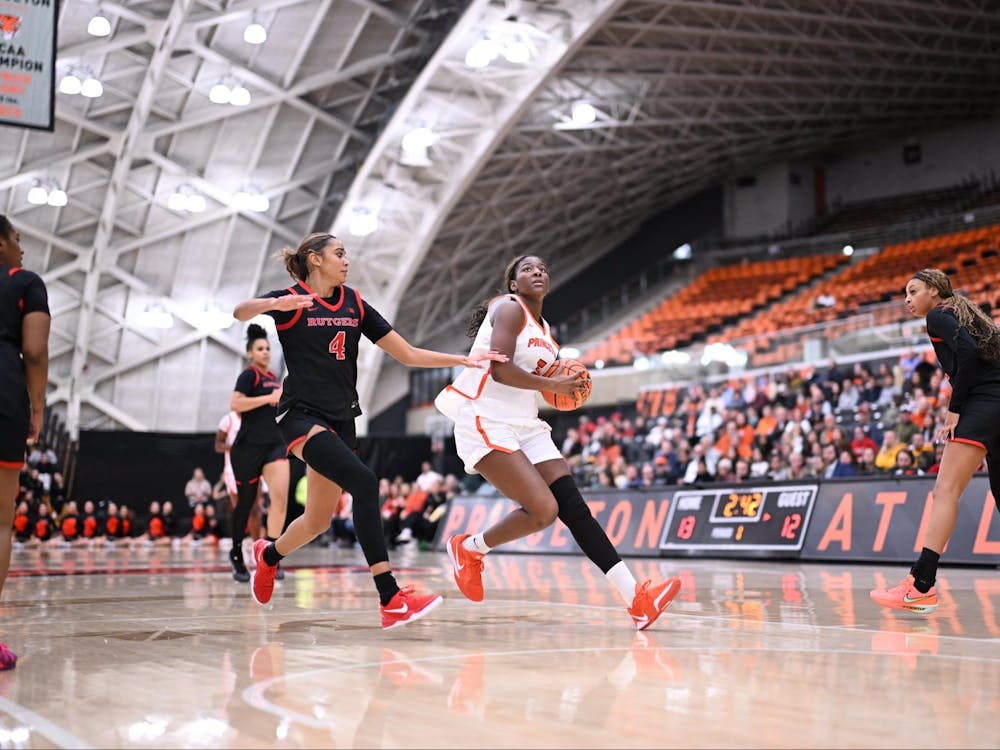Lacrosse is one of those sports, like water polo or men's volleyball, which is concentrated in a certain area of the country and, with a few exceptions, not played as competitively anywhere else. Just as water polo is played mainly in California, lacrosse is focused in the mid-Atlantic states between Baltimore and upstate New York.
The sport was first developed hundreds of years ago by Native Americans as a game to teach strength, speed and endurance. Since then, it has become the sport of choice of many young men and women along the northern Atlantic coast and is even starting to spread southward through Virginia and North Carolina. The sport has even caught on in some places west of the Appalachians, such as Colorado.
As lacrosse spread, different rules developed for men's and women's lacrosse. As an end result of the rule variations, they have become almost two entirely different games, the main differences of which are outlined below.
Contact
In women's lacrosse, players are not allowed body contact between the defender and the player with the ball. Nor is the defender allowed "rough checks" — swinging her stick at the attacker's stick. Instead, the only way she may free the ball is by a controlled check or series of taps on the stick of the attacker. In men's lacrosse, nearly anything goes as far as what the defense is allowed to do to free the ball. Some notable exceptions, however, are pushes from behind and also some attacks to the head.
Equipment
To compensate for the amount of physical abuse which the men are supposed to take, men's lacrosse players are required to wear much more equipment than the women. Helmets with facemasks and four point chin straps are required for all players. Padded gloves are also required, and the fingers must be fully encased from the top of the palm to the fingertips.
Since there is not as much contact in women's lacrosse as there is in men's, women field players are not required to wear gloves or helmets. The exception to the rule is the goalkeeper who is required to wear a facemask, throat protector, and a chest protector.
Also, in men's lacrosse, sticks must be from 40 to 72 inches in overall length to be legal. Women's lacrosse does not allow any long sticks, and the women's sticks are about the same size as the short sticks in men's lacrosse.
In addition to the length of the sticks, their carrying capacity varies between genders as well. In women's lacrosse, the strings are much tighter than in men's, thus causing them to be more shallow, enabling the defense to more easily knock the ball loose. The rule in women's lacrosse is that when a ball is placed in a stick horizontal to the ground, at least part of the ball must be seen above the wall of the head of the stick. In men's lacrosse, the rule is that no space may be seen between the top of the ball and the bottom of the head wall.
Penalties

In men's lacrosse, the punishment for penalties is a little like ice hockey in that, for major fouls, the player is sent off the field for a period of time. If the foul is minor, however, it results in only a change of possession. Women's lacrosse, on the other hand, is a little like soccer, in that the fouled team is awarded separation from the nearest defender with which to start play once more. If the penalty is inflicted near the goal, the fouled player is awarded a free position shot, wherein she is placed a certain distace from the goal, from which she may drive for a shot or choose to pass.
Substitution
Substitution in men's lacrosse is one of the most remarkable aspects of the game. Players may check in during play from the substitution box, provided that the player they are replacing has stepped off the field. In women's lacrosse, substitutions can only take place during time stoppages — penalties, goals, etc.
Out-of-bounds
Lacrosse's out-of-bounds rules are remarkable for both men's and women's lacrosse, though there are differences between the two. In women's lacrosse, there is no official out of bounds. The only rule is that the ball cannot enter the audience. If it does, then the player who was in possession of the ball or was closest to it when it went out will receive possession.
In men's lacrosse, there is an out of bounds. Usually, the team that last touched the ball in men's lacrosse turns it over. The one exception is when the ball goes out of bounds after a shot. In that case, the team whose player was closest to the ball when it went out of bounds gains possession.
Player Positioning

In men's lacrosse, of the ten players on the field at any given time, at least three field players must remain on each half of the field. Thus, even if a sustained attack is established, three defenders must remain on the defensive half with the goalie at all times.
In women's lacrosse, there are twelve players on the field at a time, and only seven attackers and seven defenders (plus the goalie) are allowed within thirty yards of the defending team's goal.







